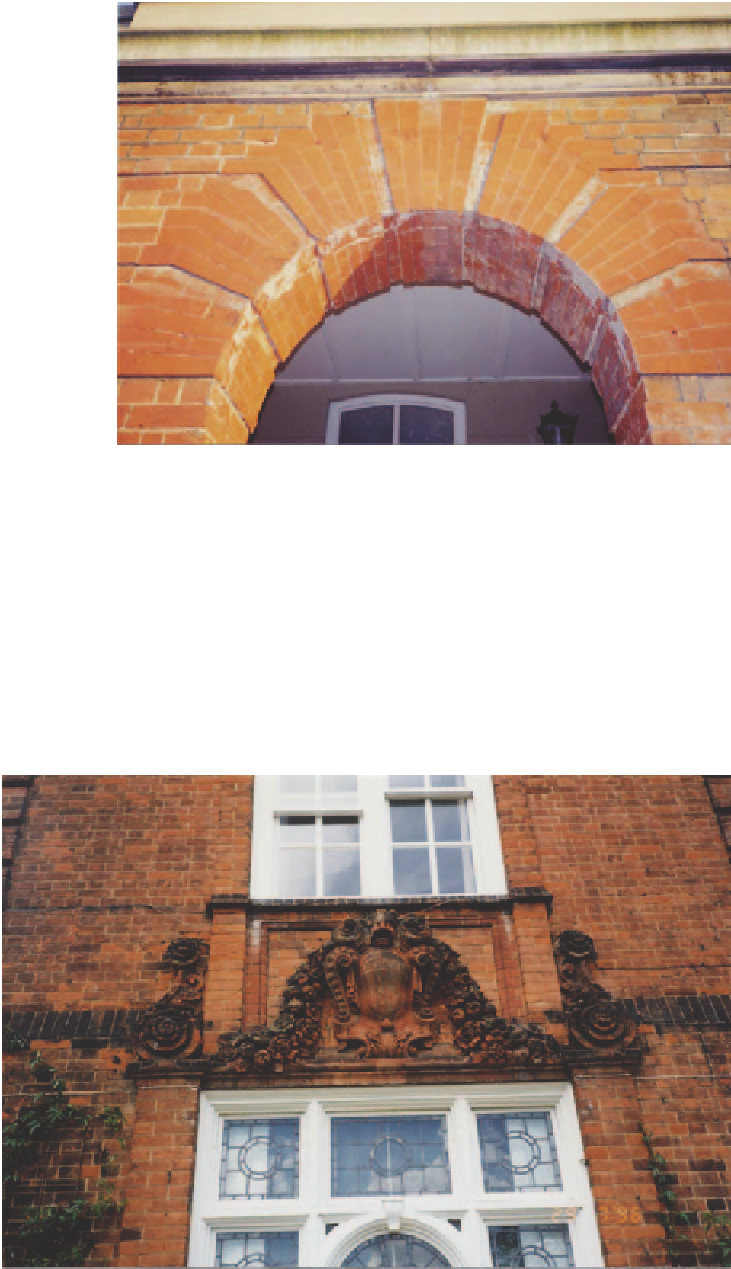Agriculture Reference
In-Depth Information
Figure 140
A rusticated semi-
circular gauged
arch at Eastney
Barracks, Portsmouth
(Hampshire), 1871,
showing the aesthetic
effects of larger rubbing
bricks.
Carving gauged brickwork, as discussed earlier, was also benefiting from new
techniques in washing and screening the brickearth and clay, making rubbers
cleaner-bodied and more homogeneous, so allowing easier and deeper carv-
ing with sharp arrises and greatly reduced unwanted inclusions spoiling the
carver's work. This facilitated a plethora of brick carving, on all forms of archi-
tectural features, to unprecedented levels, such as that displayed at Newnham
College, Cambridge (
c.
1875) (Fig. 141) and the exquisite bullseye arched win-
dows to Holywell Hill in St Albans (Hertfordshire) (1911) (Fig. 142).
Figure 141
Exquisite carved gauged
work at Newnham
College, Cambridge
(Cambridgeshire),
c
.1875.

